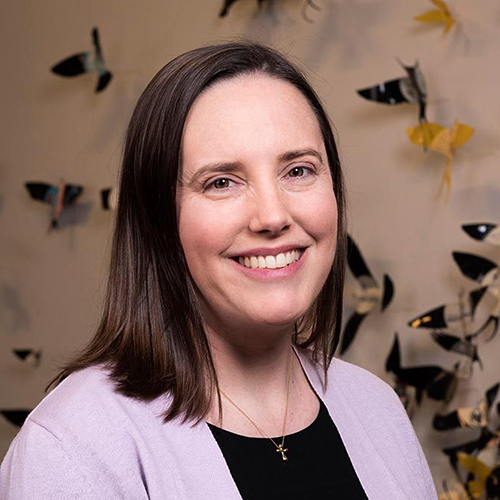Many U.S. coffee drinkers prefer lighter roasts, so Starbucks set out to meet the demand. It took, according to Fast Company, “a multitude of beans” and 80 experiments with roasting time and temperature before executives were satisfied.
Starbucks failed 79 times.
The stories of companies, and individuals, failing before wildly succeeding are legion. Consider Coca-Cola’s “New Coke” experiment, and the Wright brothers’ attempts at flying. IDEO, the design consultancy, coined a now-famous phrase that guides its work: “Fail often to succeed sooner.”
Encouraging Christian institutions to “fail often” sounds like Albert Einstein’s famous definition of insanity. One bishop, being urged to innovate, fail and adapt, said the clergy in his area are far too comfortable with failure -- failed sermons, failed stewardship campaigns, failed programs and, ultimately, failing congregations.
The challenge for Christian leaders is to rethink our notions about failure.
All failure is not bad; what is bad, and what is hampering our institutions, is failing to learn from it. And that is what the bishop was talking about -- contentment with mediocrity rather than a passionate commitment to experiment, evaluate, adapt and experiment again, for the sake of the gospel.
It is true to our calling as Christians to embrace failure.
As New Testament scholar C. Kavin Rowe reminds us, “Failure is at the heart of what Christian leaders have to offer the world.” We follow a Lord who died on the cross for our sins. We know humans to be broken, and we seek forgiveness for what we have done and left undone. The practices of confession and forgiveness ought to be in the DNA of our institutions.
Pastor and author Rob Bell tells a story of a pottery teacher’s experiment, recounted in “Art and Fear” by David Bayles and Ted Orland. The teacher divides a class in half, telling one group of beginning potters to make as many pots as they can. The other group is to make the best pot. Who succeeds? The potters who make the most pots -- learning through trial and (a lot of) error.
“God takes blood and rejection and a spear in the side and abandonment of the disciples, and takes the whole big mess and out of it makes something beautiful,” Bell said in a speech at Duke Divinity School. “When your worth and value are tied up in outcomes, it can drain the life right out of you, because there’s no way to deal with the failures. Nothing is wasted in God’s economy.”
What do Christian leaders, and our organizations, need in order to embrace the type of failure that leads to innovation?
We need first to distinguish between “bad” failure and “good” failure. We can’t tolerate failure that compromises the integrity of our organizations, whether through moral and financial improprieties or not following through with promises made to key constituents. Nor should we tolerate failure that is the result of bureaucratic messes or contentment with the status quo.
But we can support experiments and develop processes that ensure that we are staying true to our missions. When we encourage experiments, we will inevitably discover that things don’t always work as we anticipated. So long as we learn from our experiments and continually adapt, we will be cultivating good failure.
What can we do to encourage experiments?
A first step is the development of teams and networks.
Individuals can come up with fine ideas, but friends, co-workers and colleagues in other institutions can help refine them. Teams of people with diverse skills encourage one another to take risks, help one another cope with failure and support one another in learning from that failure. IDEO’s design process includes pulling together a team of people with different skills to develop ideas in collaboration.
Duke University men’s basketball coach Mike Krzyzewski said that cultivating a sense of shared purpose can bring people together and enable them to experiment in ways that promote continual learning.
“Mutual commitment helps overcome the fear of failure -- especially when people are part of a team sharing and achieving goals,” he writes in “Leading with the Heart.” “It also sets the stage for open dialogue and honest conversation.”
Make time to experiment a priority.
Google developed a system called 70/20/10. Employees were encouraged to focus on their core responsibilities 70 percent of the time, join another team for 20 percent, and spend the final 10 percent “on something blue sky.”
What guiding principles could you design that encourage employees to dream big, recognizing that such dreams inevitably will involve failure?
Tim Harford, in “Adapt: Why Success Always Starts with Failure,” describes the differing funding strategies of the U.S. National Institutes of Health and the Howard Hughes Medical Institute. NIH, Harford writes, has an “expert-led, results-based, rational evaluation of projects” -- “a sensible way to produce a steady stream of high-quality, can’t-go-wrong scientific research.”
HHMI, on the other hand, “explicitly urges ‘researchers to take risks, to explore unproven avenues, to embrace the unknown -- even if it means uncertainty or the chance of failure.’”
Three economists later studied the two approaches and determined that HHMI was funding “the most important, unusual, and influential research.” HHMI created a culture that encouraged risk and failure, but many organizational policies and procedures are designed to prevent both. Should they?
Finally, develop processes that encourage honest reflection and critique.
“Morbidity and mortality” conferences in teaching hospitals bring physicians together to discuss and learn from their mistakes. Some engineers use a process, developed by Toyota, called “Design Review Based on Failure Mode.” The process suggests small, incremental changes, discussion about those changes and rigorous testing.
In “Social Entrepreneurship: What Everyone Needs to Know,” David Bornstein and Susan Davis note that social entrepreneurs create environments in which experimenting -- and talking about, and risking, failure -- is encouraged.
“When things go wrong, they want to know primarily what happened -- and what needs to be fixed, not whom to blame,” the authors write. “They don’t take failure as an indication of personal inadequacy but as an indication of a gap in their understanding, something that can be remedied with more effort.”
We have problems to fix in and across our institutions, and fixing them will require us to dream big and to create cultures of experimentation, innovation and learning. Addressing our key challenges might involve some spectacular failures, but those failures will teach us what we need to learn and do for a more sustainable future.














